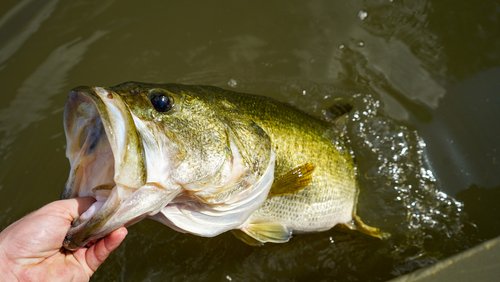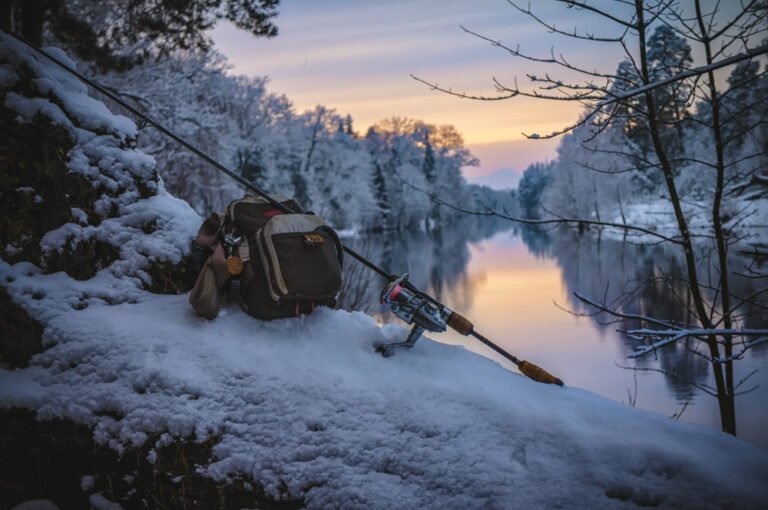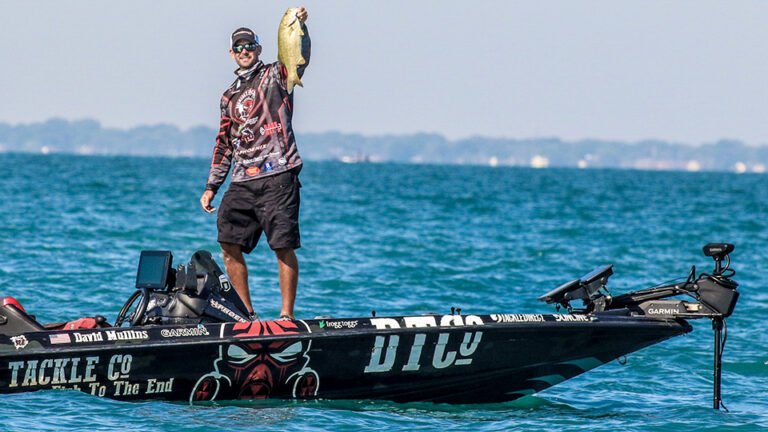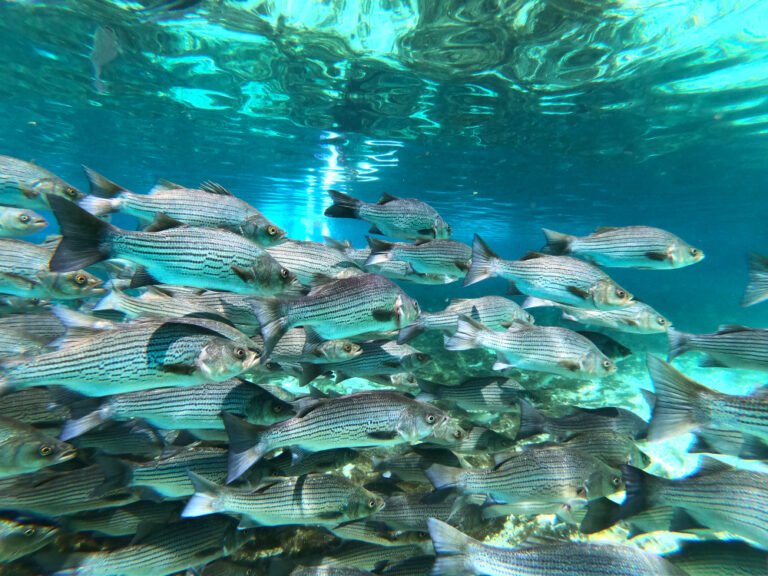When it comes to summer bass fishing, there are three main species that anglers commonly target: largemouth bass, smallmouth bass, and spotted bass. Each species possesses unique characteristics that make them distinct yet equally captivating.

Largemouth bass, known for their iconic bucket mouths and greenish hue, often inhabit warm freshwater lakes and ponds with ample vegetation.
Smallmouth bass, on the other hand, prefer clear and rocky rivers or lakes with moderate current flow. As for spotted bass, they thrive in reservoirs and larger rivers with rock structures.
Habitat Preferences and Behavior Patterns
Understanding the habitat preferences of different bass species is crucial for successful summer fishing expeditions. Largemouth bass tend to seek shelter among submerged vegetation such as lily pads or hydrilla during hot summer months when water temperatures rise. They also show a preference for structures like fallen trees or boat docks where they can ambush prey.
Smallmouth bass favor deeper waters near rocky points, submerged ledges, or drop-offs where they can hide before launching an attack on their prey. Spotted bass exhibit a similar behavior pattern to largemouths but are more resilient in terms of adapting to different habitats.
Popular Methods and Techniques for Catching Bass
To entice these elusive predators and enhance your chances of success in summer bass fishing, it is essential to employ effective techniques tailored to each species’ behavior patterns. For largemouths in vegetated areas, topwater lures like buzzbaits or poppers can create exciting surface strikes.
Soft plastic baits such as worms or crawfish imitations rigged on weedless hooks work well when targeting largemouths hiding amidst vegetation cover. Smallmouth bass are more likely to strike crankbaits or jerkbaits that mimic their preferred prey, such as crayfish or minnows.
Anglers targeting spotted bass can find success using similar techniques as those employed for largemouths. Having a comprehensive understanding of the types of bass species, their habitat preferences, and behavior patterns is crucial for successful summer bass fishing.
By tailoring your approach to match the characteristics of each species and employing appropriate techniques and lures, you can significantly increase your chances of catching these prized game fish. Whether you are pursuing largemouths in weedy waters, smallmouths in rocky riverbeds, or spotted bass in reservoirs, utilizing the right strategies will undoubtedly enhance your summer bass fishing experiences.
Summer Bass Fishing: The Ultimate Adventure
Understanding the Impact of Seasonal Changes on Bass Behavior
When it comes to summer bass fishing, understanding the impact of seasonal changes on bass behavior is crucial for anglers seeking a successful adventure. As temperatures rise, bass undergo several behavioral shifts that can significantly affect their feeding patterns and overall activity levels. By recognizing and adapting to these changes, anglers can maximize their chances of landing a prized catch.
One key factor to consider is water temperature. As the summer sun warms the water, bass become more active and seek out cooler areas with higher oxygen levels.
Understanding how temperature influences their behavior is vital for selecting the right fishing techniques and lures. For instance, during early summer when water temperatures are still mild, bass tend to stay in shallower areas where they actively feed on baitfish near cover such as submerged vegetation or fallen trees.
Water Temperature and Its Effect on Feeding Patterns
Water temperature plays a significant role in determining bass feeding patterns throughout the summer months. As temperatures rise, bass metabolism increases, leading them to consume more food to sustain their energy levels.
However, it’s important to note that extreme heat can also make them sluggish during certain periods of the day. In early summer when water temperatures are moderately warm, typically ranging from 65°F to 75°F (18°C – 24°C), bass are more inclined to chase after fast-moving prey like minnows or smaller fish.
Therefore, using lures such as crankbaits or spinnerbaits that mimic these swimming patterns can be highly effective. On the other hand, during late summer when water temperatures reach their peak (around 80°F-90°F / 27°C-32°C), bass tend to become less active during midday due to increased heat and sunlight intensity.
In this case, targeting shaded areas like weed beds, submerged structures, or fishing during early mornings or evenings when the water is cooler can yield better results. Using slower presentation techniques like soft plastic worms or jigs can entice bites from less active bass.
Understanding the Summer Solstice and Its Impact
The summer solstice, which usually occurs around June 21st in the Northern Hemisphere, marks the longest day of the year. This astronomical phenomenon affects bass behavior as daylight hours increase in duration. Longer days provide bass with more time to feed and roam their habitat, making it a prime opportunity for anglers to pursue their prize catches.
During this period, anglers can take advantage of extended fishing hours by planning early morning or late evening trips when bass are more active. As the sun rises earlier and sets later, these transitional periods offer optimal conditions for topwater lure action.
Surface lures such as buzzbaits or poppers can entice explosive strikes from aggressive feeding bass during low light periods. Understanding how seasonal changes influence bass behavior and adapting fishing strategies accordingly is fundamental for a successful summer bass fishing excursion.
By considering factors such as water temperature, feeding patterns, and the impact of longer daylight hours during the summer solstice, anglers can enhance their chances of hooking into some truly impressive catches. So grab your gear, explore various habitats at different times of day, and make the most out of this exhilarating angling season!
Choosing the Right Gear for Summer Bass Fishing
Rods and Reels Suitable for Different Fishing Techniques
When it comes to summer bass fishing, selecting the right rod and reel combination is crucial for success. Different fishing techniques require specific gear to optimize your chances of hooking a big one.
Casting, spinning, and baitcasting are the most common methods used by anglers to target bass. For casting techniques, a medium-heavy to heavy-action casting rod paired with a baitcasting reel is ideal.
This combination provides the power and accuracy required for making accurate casts into cover or targeting specific structure. Baitcasting reels also offer superior control and allow for better line management.
Spinning gear is well-suited for finesse techniques such as drop shotting or using lightweight lures like small worms or grubs. A medium-power spinning rod with a fast action tip matched with a spinning reel provides excellent sensitivity and allows for delicate presentations in clear water conditions.
Baitcasting reels are favored by many experienced anglers due to their ability to handle heavier lines, larger baits, and offer greater control when working lures through cover or vegetation. However, mastering baitcasters may require some practice if you’re new to this type of reel.
Selection of Appropriate Lines, Hooks, and Baits
To maximize your chances of landing that trophy bass during summer months, it’s important to consider the water conditions and target species when choosing lines, hooks, and baits. When it comes to line selection, braided lines are a popular choice due to their strength and sensitivity. Braided lines have little stretch which allows anglers to detect even subtle bites from bass hiding in thick vegetation or submerged structures.
However, fluorocarbon lines are another excellent option as they are virtually invisible underwater. For hooks, using offset worm hooks is highly recommended as they provide better hooksets and reduce the chances of the bait getting snagged.
Sizes may vary depending on the baits you choose, but hooks in the range of 2/0 to 4/0 are usually suitable for most summer bass fishing scenarios. Choosing appropriate baits is crucial to enticing bass during summer months.
Topwater lures like buzzbaits and poppers can be highly effective during early mornings or late evenings when bass are actively feeding near the surface. Soft plastic baits such as worms, crawfish imitations, and creature baits work well throughout the day, especially when rigged Texas or Carolina style.
By carefully selecting your gear and considering water conditions and target species, you’ll significantly increase your chances of success in your summer bass fishing adventures. Remember, having a varied arsenal of lures is key to adapting to different situations you may encounter on the water.
Locating Bass in Summer: Hot Spots Revealed!
When it comes to summer bass fishing, locating the prime spots where bass are most likely to be found is essential. During the warmer months, bass tend to seek shelter and cooler waters.
One of the key hotspots for finding them is weed beds. These underwater vegetation patches provide an ideal hunting ground for bass, offering both shade and abundant food sources like insects and smaller fish.
In addition to weed beds, submerged structures such as fallen trees or rock formations are also favorite hiding places for bass in the summer. These structures offer cover and create a perfect ambush spot for them to wait for prey to swim by.
Drop-offs, which are sudden changes in water depth, are particularly attractive to bass as they provide a transition between shallow and deep areas, allowing them easy access to both feeding grounds. To enhance your chances of locating schools of bass in these hotspots, utilizing technology like fish finders can be incredibly beneficial.
Fish finders use sonar technology to scan beneath the surface of the water and display images of underwater structures, vegetation, and even fish themselves. By interpreting these readings effectively, you’ll have a better understanding of where the bass are congregating and can adjust your fishing strategy accordingly.
Techniques for Catching Summer Bass
Topwater Lures – Buzzbaits, Poppers, Frogs
Using topwater lures during summer can be exhilarating as you witness explosive surface strikes from hungry bass. Buzzbaits create a commotion on the water’s surface with their buzzing blades that mimic prey struggling on top of the water.
Poppers produce enticing popping sounds when jerked gently across calm waters. Frogs imitate wounded or resting frogs floating on lily pads or weed mats – irresistible meals for bass.
Subsurface Lures – Crankbaits, Jerkbaits
When bass are not as aggressive on the surface, subsurface lures come into play. Crankbaits with their realistic swimming action and diving capabilities can imitate injured baitfish to entice bass lurking beneath the surface.
On the other hand, jerkbaits allow you to mimic the erratic movements of a wounded fish by jerking your rod tip during the retrieve. This triggers instinctive predatory strikes from summer bass.
Soft Plastic Baits – Worms, Crawfish Imitations
Soft plastic baits are incredibly versatile and effective in enticing summer bass. Worms rigged Texas or Carolina style can be fished through weed beds or along drop-offs with a slow, twitching retrieve that mimics natural movement. Crawfish imitations featuring lifelike appendages and vibrant colors are irresistible to bass in search of an easy meal as these crustaceans are a staple part of their diet.
Flipping and Pitching Techniques
To target specific structures like submerged logs or thick vegetation patches, flipping and pitching techniques excel. With flipping, you release line by hand instead of casting to delicately present your lure accurately near cover without causing disturbance.
Pitching involves swinging your rod towards your desired location and releasing at precisely the right moment for pinpoint accuracy. These techniques allow for precise presentations that can trigger reaction bites from cautious summer bass.
Improving Success Rates in Summer Bass Fishing
Optimal Fishing Times During Early Morning or Late Evening
During summer months when water temperatures rise and fishing pressure increases, it’s crucial to manage your time wisely to maximize success. Early morning and late evening are often the most productive periods as bass tend to be more active during cooler parts of the day. By planning your outings accordingly, you can take advantage of their feeding patterns and increase your chances of landing a trophy bass.
Adapting to Changing Weather Conditions (Windy vs. Calm)
Weather conditions greatly influence bass behavior, and adapting your fishing strategy accordingly can make a significant difference in your catch rate. On windy days, bass often gather near windblown shorelines or structures where disoriented prey is swept towards them.
In contrast, calm days may require more finesse, focusing on subtle presentations in areas with cover or shade. Being adaptable to changing weather conditions will give you an edge on the water.
Experimenting with Different Retrieval Speeds and Presentations
Bass can be finicky creatures, and what works one day may not work the next. It’s essential to experiment with different retrieval speeds and presentations to keep them interested and trigger strikes.
Varying your lure’s speed or using stop-and-go techniques during retrieval can imitate injured prey or entice sluggish fish into biting. By constantly adapting and trying new approaches, you’ll increase your chances of fooling even the most wary summer bass.
Conclusion
Summer bass fishing offers an exciting adventure for anglers seeking thrilling battles with these formidable freshwater predators. By understanding prime locations such as weed beds, submerged structures, and drop-offs, you’ll be well on your way to locating schools of bass in their preferred hiding spots.
Equipping yourself with various summer bass fishing lures such as topwater baits like buzzbaits or poppers, subsurface lures like crankbaits or jerkbaits, soft plastic baits such as worms or crawfish imitations, and mastering techniques like flipping and pitching will greatly improve your chances of hooking into a trophy bass.
Furthermore, incorporating strategies like time management, adapting to changing weather conditions, and experimenting with different retrieval speeds and presentations will help you optimize your success rates on the water. So go out there, embrace the summer bass fishing season, and create unforgettable memories while reeling in these magnificent fish.




